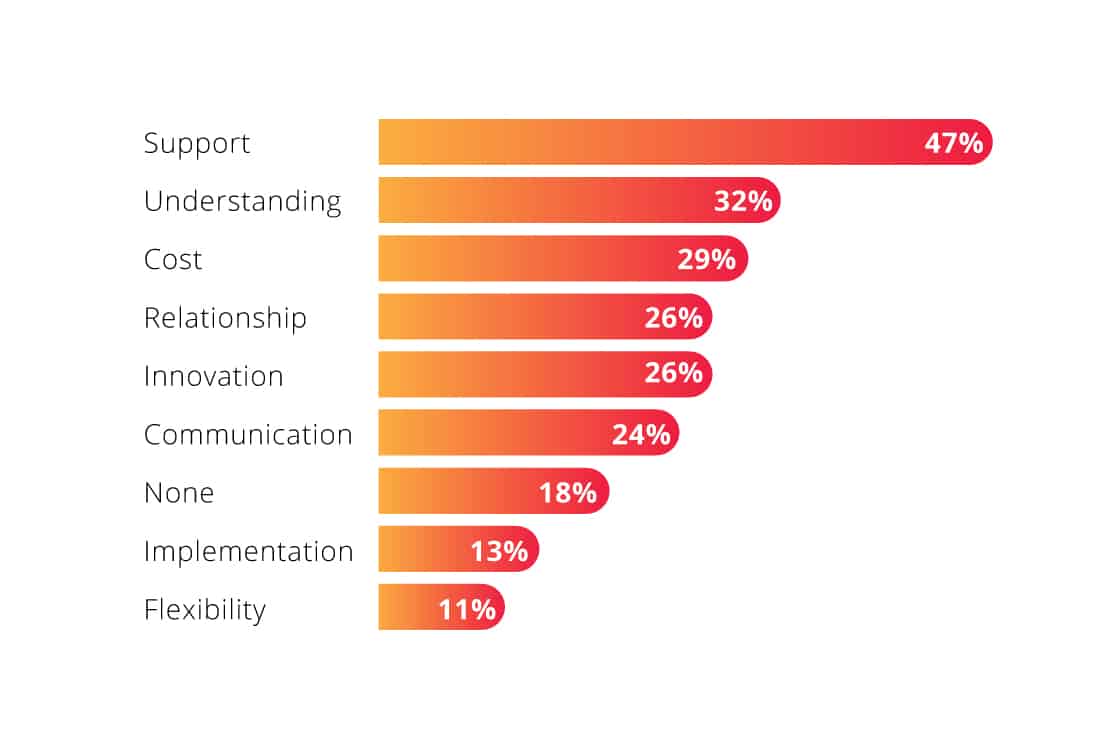
by Scarlett Bayes, Industry Analyst, SDI
There are several aspects of the partnership between service desk professionals and ITSM tool vendors; some centered around the tool itself, and others stem from customer service. Often, problems and frustrations can also arise within a service desk professional’s relationship with their vendor.
What are your top 5 frustrations with your current service desk or ITSM tool vendor? [1]
In the ‘A View From The Frontline 2017’ report, service desk professionals were asked to list their top five frustrations that they experience with their ITSM tool vendor. Our data showed that most respondents identified support to be the most significant frustration with their tool vendor:

Support should be a major component of the relationship between the service desk and their vendor. Furthermore, 26% of service desk professionals identified frustrations surrounding their relationship with their vendor. This is not uncommon, and previous versions of this report have told a similar story. Perhaps there is an expectation of after-sales support from customers that vendors are not aware of, and are unintentionally harming their relationships with their customers.
How do we fix this?
The procurement stage of a service desk tool is perhaps the most integral stage. Service desk professionals can spend a significant amount of time and resources when searching for a new ITSM tool to implement, and when interacting with a potential vendor, customers will typically discuss what they need in terms of product, but not what they will need in terms of support. Therefore, one way to potentially circumvent the frustration that a large proportion of service desk professionals share would be for vendors and customers to discuss an after-sales support plan.
For example, this could lay out the customer expectations from the vendor in terms of support and relationship after the customer has bought and implemented a tool. In doing this, the customer is then fully aware of what they expect from their vendor, and therefore can choose a vendor that meets their after-sales needs, as well as tool requirements. Furthermore, a vendor can provide their customers with a more personalised and holistic service, thus perhaps reducing customers’ frustrations.
Where to start
Whether you work for a vendor, or are involved in the procurement for ITSM tools, starting the conversation with the other party is the first step to ensuring that after-sales needs will be met, and ultimately allow a space for vendor/customer relations to evolve and become more cooperative.
[1] SDI, A View From The Frontline, 2017























